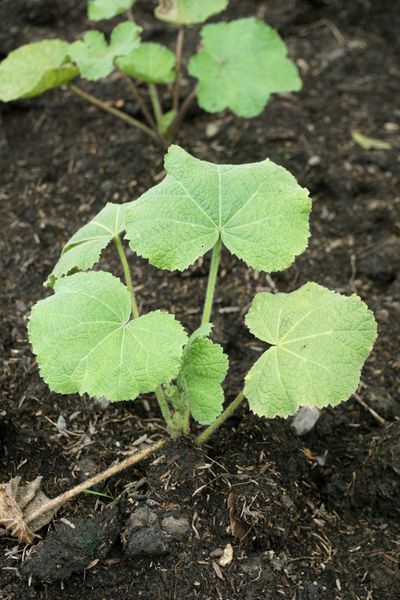You can’t find any signs of bacterial, viral, or fungal infections when you inspect your hollyhock. Pest control sprays haven’t helped either. You’re not sure why your hollyhocks are failing. Perhaps it’s because the trouble lies under the soil. You may have hollyhock nematode problems.
How Do Nematodes Affect Hollyhocks?
Nematodes are tiny parasitic worms that feed on plant roots. They’re distributed worldwide and cause problems for commercial growers, greenhouse operators, and the garden hobbyist. These microscopic pests snack on the roots of many types of plant, including cultivated flowers like hollyhocks. Hollyhock nematode symptoms include poor development and general decline during the growing season. The plant can appear stunted with yellowing or wilting leaves during the day, but recover at night. Digging up and examining the roots of an infected plant can give you the clues you need to suspect the cause is hollyhock nematodes. As parasitic hollyhock nematodes feed, the roots become knotted with visible galls or root swellings. The appearance of root knots and underdeveloped root structures are classic hollyhock nematode symptoms. Nematode infested roots may also show signs of rotting. Positive confirmation of a nematode infestation can be made by the Nematode Diagnostic Laboratory. Your local county extension office can help you collect and send a sample for testing for a minimal fee.
Methods for Hollyhock Pest Control
Commercial agricultural operations rely on chemical nematicides to control nematode populations in their fields. Yet, nematicides are very toxic and expensive, making this type of hollyhock pest control impractical for the home gardener. If you have hollyhock nematode problems, try these tips to reduce populations:
Choose nematode resistant plants whenever possible. Annual garden vegetables, such as peppers and tomatoes, are susceptible to nematodes. Growing resistant varieties of vegetables can protect your hollyhocks by reducing the population density of nematodes in your yard.
Rotate where hollyhocks are planted. Hollyhocks are short-lived perennials in USDA zones 3 to 8 and grown as annuals elsewhere.
Alternate hollyhocks with non-host species or those known to lower nematode numbers. These include broccoli, cauliflower, and some varieties of French marigolds.
Never move soil from an area infected with nematodes to an uninfected one.
Practice cleanliness. Nematodes can hitch rides on tools, gloves, pots, and garden equipment, like rototillers.
Remove dead plants from the garden. Properly dispose of diseased plants.
Keep flowerbeds and gardens weeded. Nematodes don’t discriminate between the roots of undesirable plants and prized specimens.
Till heavily infected areas often during the winter months to expose the hollyhock nematodes to cold weather.
Solarize the flowerbeds to reduce and eliminate hollyhock nematode problems.
Finally, healthy plants show fewer signs of nematode damage. Feeding, watering, and proper soil amendment can help your hollyhocks grow into vibrant, colorful, flower specimens that are the envy of other gardeners!
